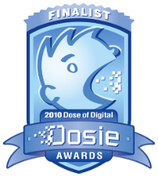"The primary emphasis for all healthcare organizations in the year ahead will be on reducing costs and creating greater value in the health system, a focus that will have a domino effect from one sector to another, and (will) redefine roles, responsibilities, and relationships," says David Chin, MD, a partner and leader of the institute.
The report, entitled appropriately enough "Squeezing the Juice Out of Healthcare," lists 10 issues of concern for health providers, including insurers, hospitals, physicians, pharmaceutical and life-sciences companies, and even community groups and municipalities.
They are:
1. Reducing Costs. Hospitals, physicians, and other providers will have to squeeze every penny out of their operations, including renegotiating contracts with suppliers on everything from food to medical devices and pharmaceuticals. "All reform will be in the context of future spending, particularly in light of Medicare and Medicaid absorbing an increasingly large part of the GDP," according to the report.
This will mean increasing reimbursement pressure, with physician practice models beginning to adapt. Payers will grapple with Medicare Advantage reimbursement leveling, and perhaps fees or taxes on insurers. Pharma will be more intensely restricted in its marketing activities and data usage, rebate changes and at the same time, maintaining its $80 billion contribution agreement with the Obama administration.
2. Regulatory Change. Dozens of new agencies and grant programs, reimbursement, and pricing pressures, with increased governmental oversight, will impose new requirements on healthcare providers.
The proposed Physician Payments Sunshine Act would require pharma and device companies to disclose consulting fees paid to physicians, health insurers, pharmacists, and others. Non-labor costs can make up half of most hospital expenses, and executives say they're scrutinizing purchases in areas of biomedical engineering, energy, security, and even parking as places to cut. Even food and nutrition services are on the chopping block, as are laundry and linen services.
3. Incentives and Value-based Purchasing. Fewer than half of providers have implemented all but the most basic electronic health record functions.
2010 will be a double-bonus year for physicians who act quickly to take advantage of government incentives to adopt electronic medical records and e-prescribing (See MicroMD under 'Spotlighted products' on the BAC Medical Marketing homepage). Those who do not will face potential penalties later. This new carrot and stick model indicates the government's changing role from a 'passive payer' to an 'active buyer,' according to the report.
4. Focus on fraud. With an estimated $1.6 billion in savings said to healthcare fraud detection, prevention, and recovery, healthcare organizations will need to tighten their internal controls. Pharmaceutical executives now face jail time for off-label marketing violations and hospitals are looking nervously at the Centers for Medicare and Medicaid Services Recovery Audit Contractor program.
5. Technology. Stimulus funds from 2009 are boosting broadband funding, with an eye to converge technology and telecommunications companies. For example, Verizon's Telehealth Collaboration Services Initiative provides remote consultation and technology for continuing medical education and virtual encounters for hospitals, physician practices, labs, and government agencies. GE Healthcare and Sprint are partnering with San Antonio's Methodist Healthcare to create a wireless infrastructure for anytime communication.
6. Prevention. Pharmaceutical and life sciences companies will be more involved in promoting prevention and seeing results in patient outcomes. "In 2010, expect to see greater alignment of incentives between pharmaceutical companies, payers, and providers," as well as retailers to address education, clinical effectiveness, product safety, wellness, and compliance, according to the report.
7. Physician involvement. Doctors will seek greater stability and electronic connectivity. Accountable care organizations will require all providers to reevaluate their relationships, operational infrastructure, payer contracting, and overall funding models.
8. Alternate care models. Expect an increase in the number and scope of services offered outside physicians' offices and hospitals, perhaps even in workplaces and retail health clinics. Home health services, enabled by technology, will be given a boost through e-mail, telehealth, and remote patient monitoring.
9. Disaster planning. Another wave of H1N1 will put more pressure on public health outbreak response, vaccine supply and distribution, better communication, consideration of bed capacity, sick leave policies, and the role of funding mechanisms and contingency plans.
10. Social responsibility. Community-oriented health services and consumer access will involve neighborhoods and municipalities in an effort to promote personal responsibility. Many of these efforts will continue to be boosted by grants, such as the Indiana Tobacco Prevention and Cessation group and the AARP Blue Zones Vitality Project in Albert Lea, MN, which seeks to prolong life expectancy by at least two years.
BAC Medical Marketing wishes all our current and future clients a very happy and healthy 2010!

 RSS Feed
RSS Feed































